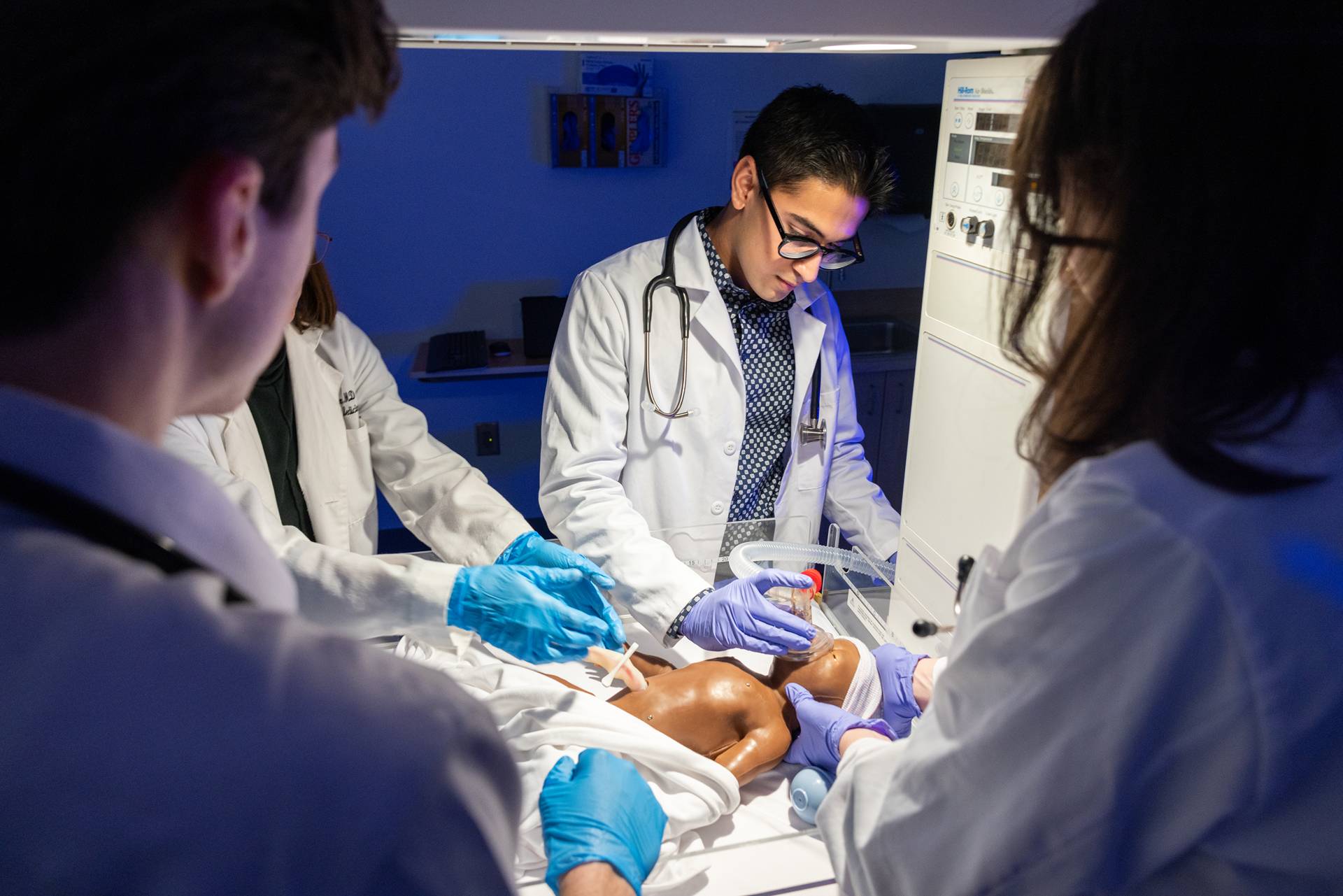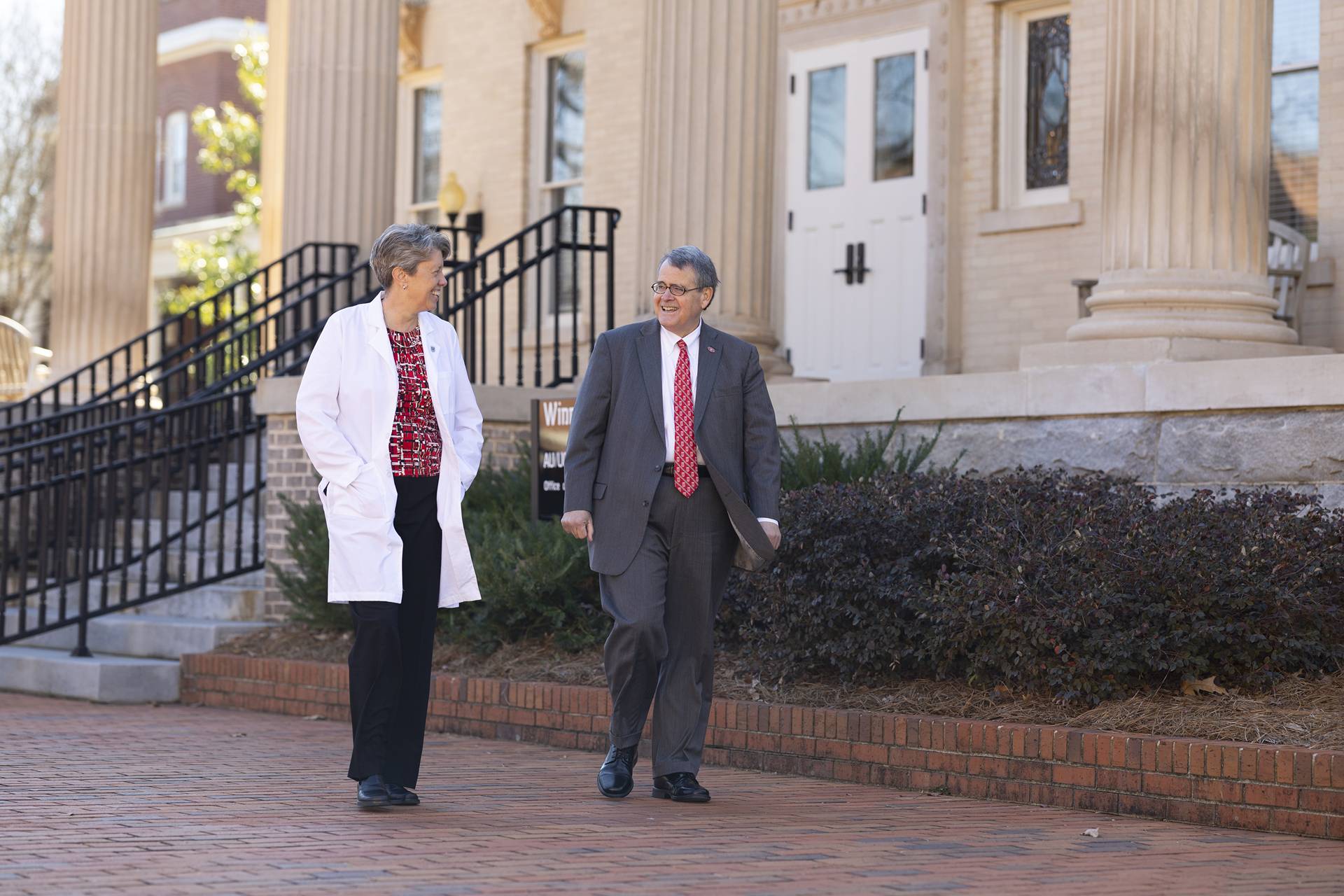UGA School of Medicine will help fuel Georgia’s economy
Athens, Ga. – The University of Georgia’s School of Medicine will train doctors. But the school will also serve as an economic powerhouse driving major economic gains across the state.
File Under
The School of Medicine will generate between $1.8 billion and $2.3 billion in cumulative economic impact on the state by 2040, according to an analysis conducted by the nationally recognized consulting firm Tripp Umbach. The biggest drivers of that economic return will be improvements to health care, research expansion, and job creation.

Health Care Savings
Additional physicians could generate up to $932.8 million in economic activity
Georgia is the eighth-largest state in the nation by population, but it currently ranks 40th in the nation for the number of active patient care physicians per capita. The School of Medicine will help change that. Doctors trained here will help protect the health of Georgians across the state.
Between 354 and 424 (50-60%) of the anticipated 708 graduates in the years 2030 to 2037 are expected to remain in Georgia to practice, according to the report’s estimates. These additional physicians could generate up to $932.8 million in economic activity, create more than 5,700 jobs and provide up to $34.7 million in state and local tax revenue by 2040.
Of the total number of physicians who remain in Georgia to practice, approximately one-third will specialize in primary care. Their medical practices alone will lead to health care cost savings between $255.6 million and $457.2 million, according to the report’s estimates.
These savings will be realized through early detection and treatment of diseases, better management of chronic diseases and a reduced reliance on costly emergency and specialist care, according to the report.
“Too many Georgians face barriers in accessing high-quality health care,” said UGA School of Medicine Founding Dean Shelley Nuss. “Nine counties in our state have no doctor at all, affecting one in 10 Georgians. The School of Medicine will help advance the health of our communities and address Georgia’s unmet health needs.”

The medical school also will have a significant impact on research, as clinicians and medical researchers will have access to UGA’s extensive research infrastructure.
“We believe this transformative medical education and research program will advance physical and economic health throughout Georgia”
At $89.5 million in fiscal year 2023, the University of Georgia had the highest amount of annual funding from the National Institutes of Health among all public universities without a medical school. With the addition of the medical school, the report estimates that NIH funding will increase between $179.3 million and $239.1 million by 2040. This increase, in turn, will result in a total economic impact of $412.5 million and $550 million from research alone to the state’s economy.
The report indicates that by 2040, the University of Georgia School of Medicine will generate $397.3 million every year through its operations, most of which will come from job creation. The report further estimates that the School of Medicine will support 953 direct jobs and 1,695 indirect jobs statewide by 2040.
Direct jobs are the full- and part-time jobs supported by the school itself, while indirect jobs include support services, vendors, contractors, hotels, retail establishments and visitors to the medical school.
“We believe this transformative medical education and research program will advance physical and economic health throughout Georgia,” said Paul Umbach, president and founder of Tripp Umbach. “Our confidence in the economic impact analysis is supported by UGA’s 15 years of experience as a partner campus with the Medical College of Georgia and its movement to a separate integrated program within a top-tier public university.”

School of Medicine Dean Dr. Michelle Nuss walks with President Jere W. Morehead in front of Winnie Davis Hall at University of Georgia.
The UGA School of Medicine is located on UGA’s Health Sciences Campus, where physicians have been training since 2010 under the Augusta University/University of Georgia Medical Partnership.
 Many of the required facilities for an independent medical school already exist thanks to the development of this partnership. But the medical school also will benefit from a new medical education and research building, which will feature medical simulation suites, standardized patient rooms, clinical skills labs, a gross anatomy lab and a medical library.
Many of the required facilities for an independent medical school already exist thanks to the development of this partnership. But the medical school also will benefit from a new medical education and research building, which will feature medical simulation suites, standardized patient rooms, clinical skills labs, a gross anatomy lab and a medical library.
The building also will feature student support spaces such as conference rooms, study spaces, lounges, and faculty and staff offices dedicated to student support.
The proposed building will measure approximately 92,000 square feet, with roughly 67,000 square feet dedicated to medical education and 25,000 square feet reserved for biomedical research laboratories.
Following the recommendation of Gov. Brian Kemp, the Georgia General Assembly passed a fiscal year 2024 amended budget that included $50 million in funding for the $100 million facility, which has been matched by private funds from the UGA Foundation, the UGA Research Foundation, and UGA alumni and friends.
The University System of Georgia Board of Regents authorized the University of Georgia to establish a new independent School of Medicine in February 2024. The university submitted its official application for accreditation to the Liaison Committee on Medical Education in late November. This is an important benchmark in the development of the newly formed school and a major milestone in UGA’s efforts to enhance health care throughout the state.
An accrediting body for medical education programs leading to a Doctor of Medicine degree, the LCME is jointly sponsored by the Association of American Medical Colleges and the American Medical Association.
The LCME will review the application in late February.



